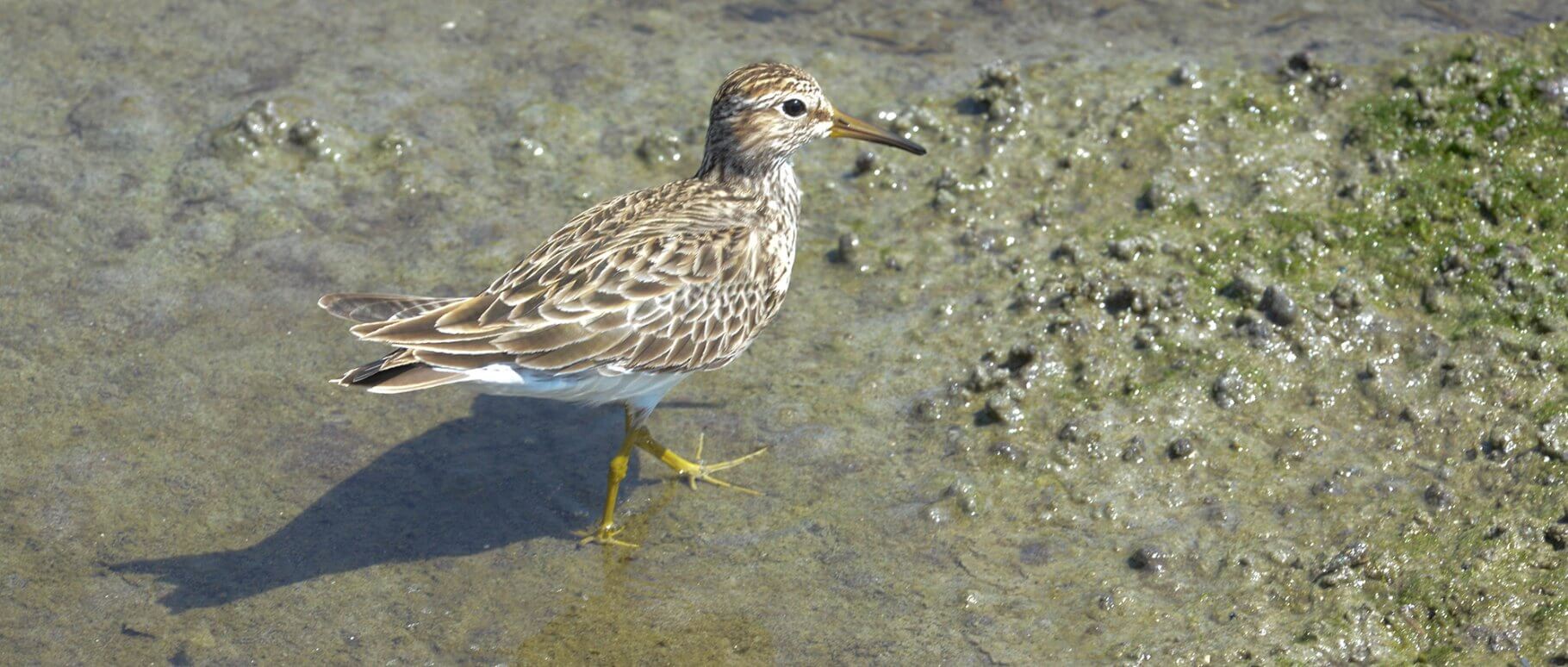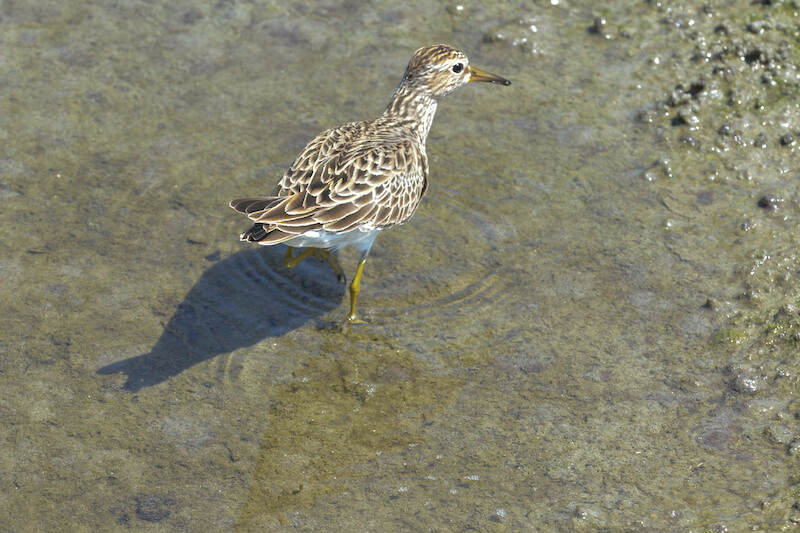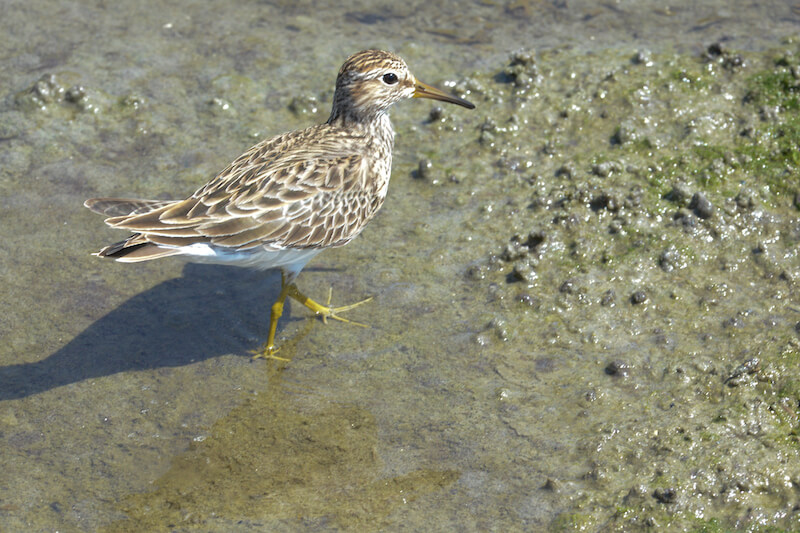
PEctorAL sandpiper is a migratory bird from the north pole
PLAYERO PECTORAL es un ave migratoria que viene del polo norte
Calidris melanotos
The word pectoral refers to the fact that the male has an inflatable throat sac that expands and contracts during flight that emit bizarre hollow hoot sounds particularly a courtship flights. This plover is mostly found mudflats with weedy vegetation. It is migratory bird that comes from the Artic. It is a medium-sized (20-30 cm or 8-12 in), chunky bird that prefers to be seen in grassy areas rather than in the sand or water. It shows a heavily streaked breast which contrasts sharply with its white belly. The bill is black at the tip and light brown at its base. It has yellow-greenish legs. The upper wing shows a narrow stripe. Displays a noticeable degree of sexual dimorphism. Males are bigger than females. If feeds on aquatic invertebrates by probing in mud and by picking insects from soil. It also forages on flies their larvae, spiders, crabs, crustaceans but insects are its main source of nutrition. Nests are built by female on ground well hidden in grass. Female only takes care of incubating 2-4 eggs. The eggs are whitish-olive with dark brown blotches that are incubated for 21-23 days.
Este playero migratorio mide entre 20 a 30 cm with a wingspan of 46 cm (18 in) y se lo encuentra en lugares húmedos anegados o arenosos pero prefiere vivir en lugares de vegetación baja y de poca agua. Menos común en playas y zonas lodozas de la costa. Tiene una nuca larga. Sus patas son de color amarillo. Pico tiene una punta negra y pardo-oliva en el resto. Su región pectoral es estriado denso y vientre blanco. Partes superiores color marron y estriado de negro con tonalidades rojizas. Es muy evidente el contraste en la coloración del pecho, pardo oscuro, con el del resto del vientre, blanco. Patas de color amarillo-verdoso. Los machos tienen un saco aéreo en la garganta que se contrae y dilate que produce un sonido inusual durante el cortejo. Se encuentran en bandadas con otras aves playeras. Se alimenta generalmente de insectos, arácnidos, artrópodos, invetebrados y material vegetal y a veces semillas. Apareamiento promisco. La hembra construye su nido en la superficie del suelo a una profundidad hasta de 5 cm para que los huevos no pierdan calor por la brisa. Antes de emigrar cerca al Artico Pone hasta 4 huevos color verde oliváceo con manchas cafés que incuba durante 21 a 23 días.

LAM_1940

LAM_1941

LAM_1942
